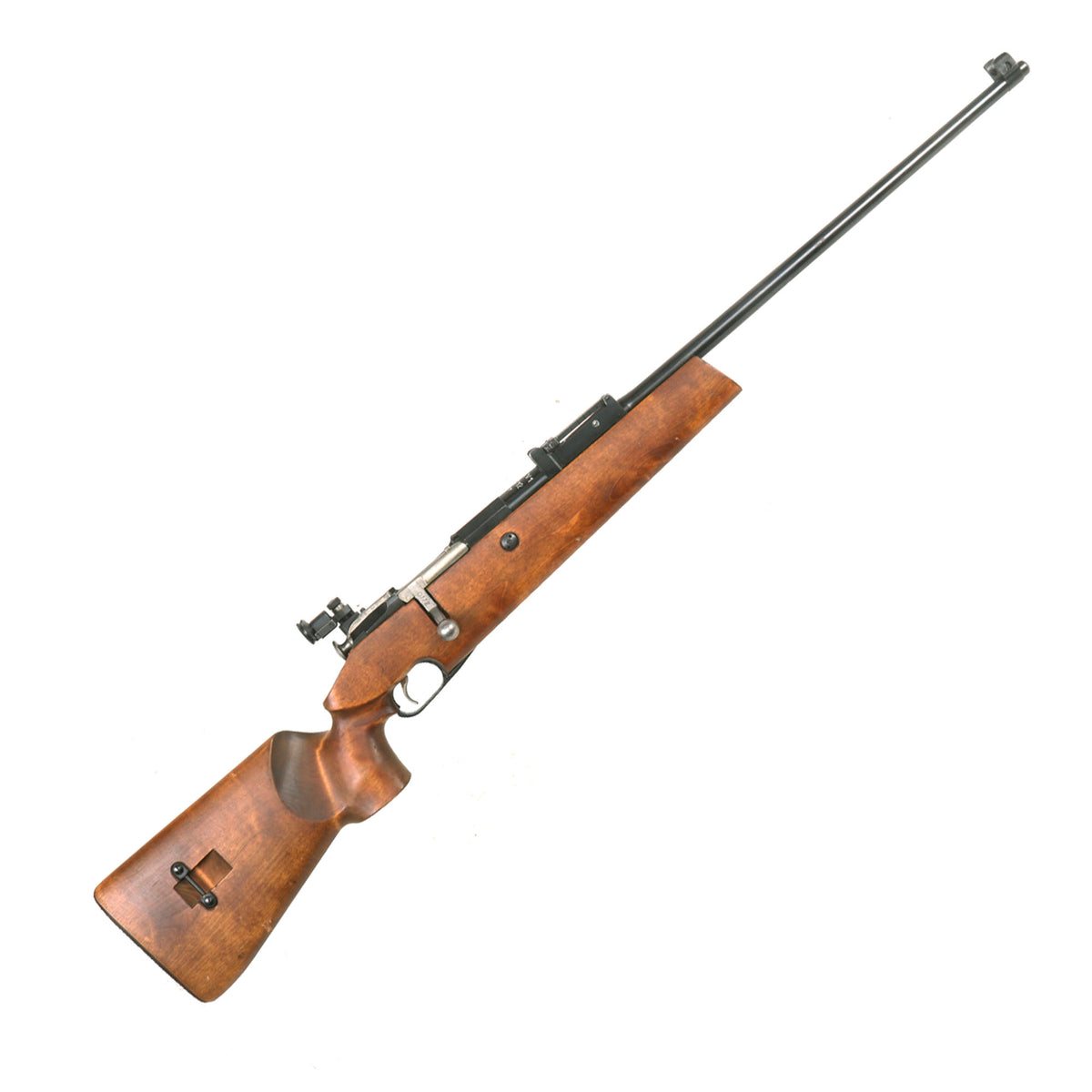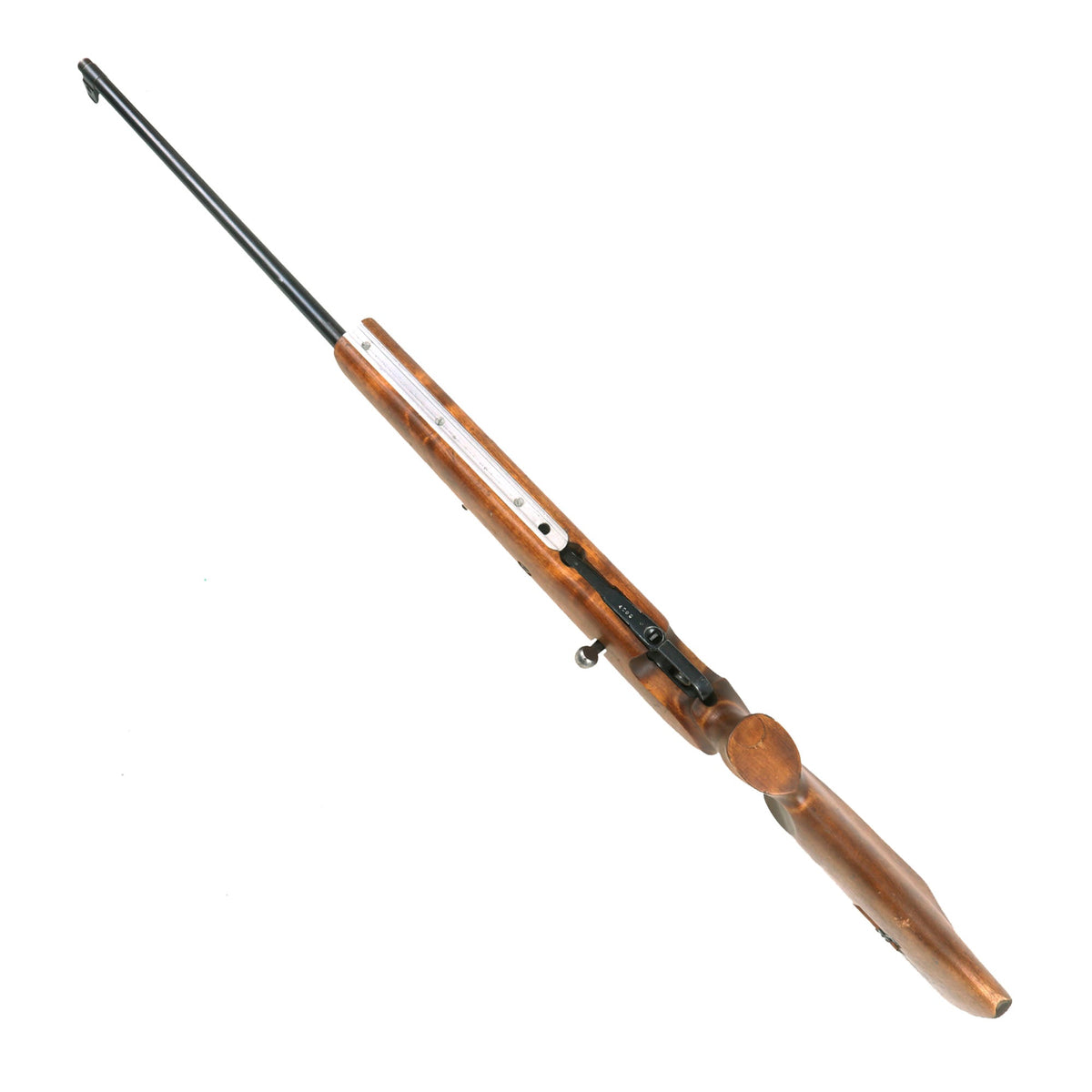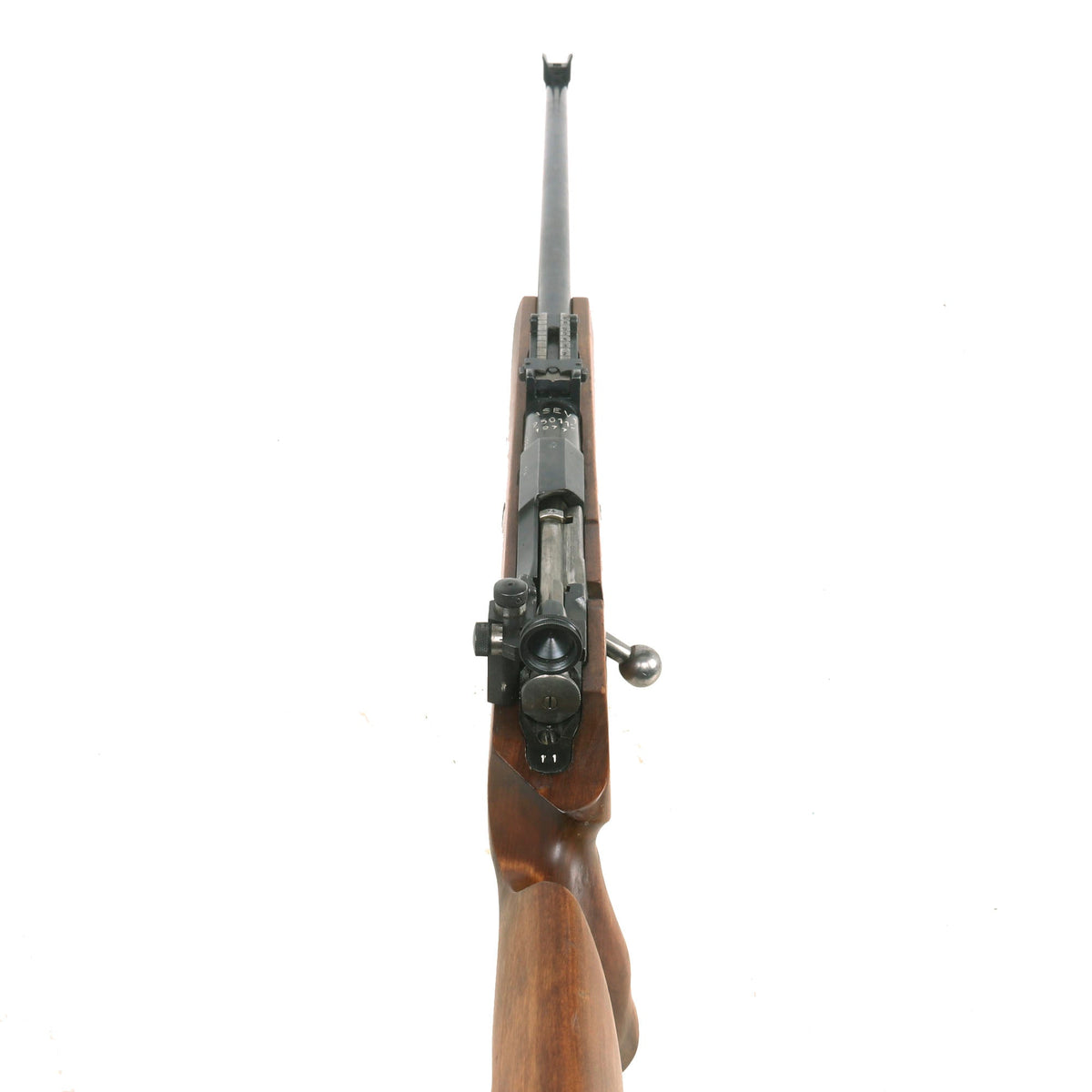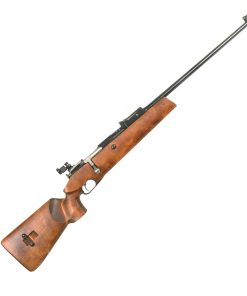Original Finnish M/28-76 Mosin-Nagant Target and Marksman Rifle Serial 250112 – Antique Tula Receiver Dated 1895 Original Items
$ 2.295,00 $ 573,75
Original Item: Only One Available. These are so very rare, a real pre-1899 Antique Russian Mosin-Nagant Rifle, originally referred to as the “Three Line Infantry Rifle, Model of 1891.” This example was almost certainly one of 190,000 or so Mosin-Nagant M1891 Full Length Rifles left behind in Imperial Russian depots when the country gained its independence in 1917-1918. The rifle was quickly adopted as the standard weapon of the fledgling country, and quickly the need arose to overhaul these to meet Finnish Army standards. This resulted in the first of many upgraded Finnish Mosin-Nagant rifles, the M/91. Due to the large number of rifles already present, until close to the WWII era all Finnish Mosin-Nagant rifles were built on the original Russian receivers.
This also continued well into the post war era, as the receivers were robust, and that is exactly what happened in this case. This is a very nice example of the Finnish M/28–76 Dual Purpose sniper rifle and target rifle for CISM 300 m standard rifle competition. It was constructed in 1977 using an antique 1895 dated Imperial Russian receiver. These were an improvement over the previous M/28–57 and M/27–66 target rifles, and like those, often utilized barrels and receivers from existing rifles.
They were modified from existing M/28–30 and M/28–57 rifles, using the M/28–30 barrel and sights, often with new barrels, but sometimes original from M/28–30. These were then fitted with new birch wood stocks of the same profile as the M/27–66. The target rifle version had a diopter rear sight added and a modified front sight, while the sniper rifle version had a scope base. Modification work for the rifles was carried out by Finnish Defense Forces Asevarikko 1 (‘Arsenal 1’) in Kuopio.
Only about 1,000 of these target rifles were ever imported into the United States, making each example rare. These were assumed to be non-antique, so many were stamped with import stamps on the bottom of the barrel, such as this example:
PRI GARDEN CITY KS
FINLAND VALMET 28-76 7.62X54R
This indicates importation by Postrock Imports, a known importer of Mosin-Nagant rifles. It also gives the chambering as 7.62×54mmR Russian, but we do not know if this was verified by slugging and chambering, or just assumed. Most of these were made for 7.62×53mmR Finnish, however we have no way to verify which chambering it is for. The barrel is the correct shorter 27 inch version, which is thicker than the original Russian specification for greater accuracy. The top of the barrel base is marked with the following information:
ASEV1
250112
1977
It is also marked on the left side with D-166, which we do not understand the significance of. From what we have read, the “ASEV1” marking and 1977 indicate inspection as a “match grade” barrel in 1977. The front top of the receiver itself is marked with the Imperial Russian Double Headed Eagle over Cyrillic letters Л К, and on the left side with 42138. The bolt is marked with serial number 0112, and has been significantly modified from the original shape. We also noticed that one of the bolt components has the Bow and Arrow proof of Izhvesk arsenal, so even in those days the Finns were still reusing the Imperial Russian components.
The bottom of the receiver tang is dated 96г for 1896, legally classifying this as a pre- 1899 antique. Above the date is a HAMMER, the marking of Императорскій Тулбскій Оружейнбій Заводъ, the “Imperial Tula Arms Factory”, one of the most prominent in Russia. Reconstructed in the 19th century Tula Arms Factory became one of the most prominent arms factories in Europe. In 1879 the plant started production of the famous Berdan rifle with an improved bolt. Workshop was organized by a model where created their own models of small arms and hunting weapons. Increased production of various products: single- and double-barrel muzzle-loading shotguns, breech-loading center-fire rifles. Designer Sergei Ivanovich Mosin took part in devising damascus steel technology used in production of barrels. He also designed a bolt-action rifle which was put to testing along with a rifle developed by Émile Nagant. In 1891, as a result of complex tests Mosin’s entry was chosen over the Belgian design and it was adopted by the Imperial Russian Army as the three-line rifle of 1891.
The condition of the rifle is really very good, showing some light wear on the marksmanship style stock, but nothing out of line for being close to 50 years of age. The finish on the barrel and receiver is very well retained. The aluminum dovetails on the bottom and left side of the stock show some marring from having items attached in the past. This was probably a bipod on the bottom, but we do not know what was usually attached to the left side.
The rifle cycles correctly with a strong dry fire, though we have no way to test to see if the magazine still feeds. The M/39 pattern rear sight is fully functional, but no longer used due to the excellent rear peep sight that was installed as part of the conversion. This is still fully functional, with the range and windage controls working great. One downside though is that the match style front globe sight is no longer present, so there is not any front sight currently. We checked the bore, and it is in excellent condition, showing a bright finish with crisp lands and grooves.
A wonderful piece of Finnish and Firearms history! Ready to research and display!
Specifications:
Year of Manufacture: 1895
Caliber: 7.62×54mmR Russian or possibly 7.62×53mmR Finnish
Cartridge Type: Centerfire Cartridge
Length (overall): 46 1/2″
Barrel Length: 27″
Stock length: 29 1/1″
Action type: Bolt Action
Feed System: 5 Round Internal
During the Winter War of 1939/1940, Finland heroically fought the forces of the Soviet Union in a David-versus-Goliath struggle that lasted about 100 days. Though the Finns eventually lost about 11 percent of their territory to the Soviet Union, they inflicted 323,000 casualties on the Soviets while suffering only 70,000 casualties themselves. Of course, for a small country that was a lot of casualties. As a result of Finland’s tenacity and courage during the Winter War, the reputation of the Finns around the world was enhanced, while the Soviet’s poor performance in combat may have contributed to AH’s decision to invade the Soviet Union less than a year and a half later.
Finland’s greatest asset during the Winter War was a large cadre of citizen soldiers who combined their skills as skiers, woodsmen and riflemen to ambush and carry out hit-and-run attacks on the Soviets. The principal weapons for the Finnish raiders were the Suomi submachine gun and the Finnish versions of the Mosin-Nagant rifle, chambered for the Finnish 7.62x53R round, which is virtually identical to the Russian 7.62x54R round used in their version of the Mosin-Nagant.
Originally, Finland had a large number of Soviet Mosin-Nagant M/91 rifles, which were in military arms depots when they achieved their independence from Russia in December 1917. Within a few years, however, the Finns would begin producing Mosin-Nagant rifles at SAKO, Tikka and Valmet, three arms producers that remain famous today for high-quality rifles.
The first large-scale upgrade of Finnish Mosin-Nagant rifles was the M/24 rifle for the Finnish Civil Guard. The Finnish Civil Guard (the Suojeluskunta) fulfilled a function similar to the U.S. National Guard. It was composed of volunteers, many of whom were outdoorsmen, hunters and shooters. They were separate from the Finnish Army, which was composed primarily of conscripts. Civil Guard members trained frequently and realistically. So much stress was put on marksmanship that the Civil Guard actually owned the Sako gun works. Most who have studied the Winter War believe that the Civil Guard was the most important element early in the conflict to slow the Russian advance. Their M/24 rifles used German barrels from Venus Arms, or barrels purchased from SIG in Switzerland. These rifles are often referred to as the “Lotta Rifle” after Lotta Svard, the women’s auxiliary of the Civil Guard, which helped raise the money for the rifle upgrades.
Next, the Finns reworked the M1891 Mosin-Nagant by retaining the receiver and magazine, but using a shorter, heavier barrel, improved sights, an improved bolt and new barrel bands, among other changes. After problems arose with the stock breaking when using the bayonet, the stocks were also modified. An interesting point is that many Finn soldiers didn’t like the bayonet, but preferred to use their traditional puukko knives for close combat. The current bayonet for the Valmet M/76 rifle is actually a knife bayonet of traditional style. A shortened cavalry version, the M/27rv, was also produced in limited numbers. Very similar to the M/27 was the M/28, which had a different barrel band and improved trigger. Initially, M/28 barrels were purchased from SIG, but later they were produced by Tikka and SAKO. All of the rifles, however, were assembled at SAKO. The major criticism of the M/28 was that it retained the Russian “Konovalov” rear sight, which Finnish troops did not like. This is one of the primary reasons for the development of the M/28-30.
Fast Shipping with Professional Packaging
Thanks to our longstanding association with UPS FedEx DHL, and other major international carriers, we are able to provide a range of shipping options. Our warehouse staff is expertly trained and will wrap your products according to our exact and precise specifications. Prior to shipping, your goods will be thoroughly examined and securely secured. We ship to thousands clients each day across multiple countries. This shows how we're dedicated to be the largest retailer on the internet. Warehouses and distribution centres can be located throughout Europe as well as the USA.
Note: Orders with more than one item will be assigned a processing date depending on the item.
Before shipping before shipping, we'll conduct a thorough inspection of the items you have ordered. Today, the majority of orders will be delivered within 48 hours. The delivery time will be between 3-7 days.
Returns
The stock is dynamic and we cannot completely manage it because multiple stakeholders are involved, including our factory and warehouse. So the actual stock may alter at any time. It's possible that you may not receive your order once the order has been made.
Our policy is valid for a period of 30 days. If you don't receive the product within 30 days, we are not able to issue a refund or an exchange.
You can only return an item if it is unused and in the same state as the day you received it. You must have the item in its original packaging.
Related products
Uncategorized
Armoured Fighting Vehicles of the World: AFVs of World War One (Hardcover Book) New Made Items
Uncategorized
Uncategorized
Armored Burgonet Helmet & Polearm from Scottish Castle Leith Hall Circa 1700 Original Items
Uncategorized
Uncategorized
Uncategorized
Uncategorized
Uncategorized
Uncategorized
Uncategorized
Uncategorized
Uncategorized
Uncategorized
Uncategorized
Uncategorized
Australian WWII Owen MK1 Machine Carbine SMG Custom Fabricated Replica with Sling Original Items
Uncategorized
Uncategorized
Uncategorized
Uncategorized
Uncategorized
Uncategorized












































































